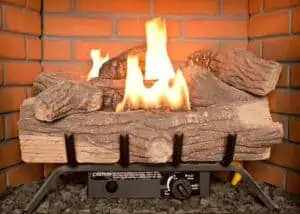How to Whitewash a Brick Fireplace?
Whitewashing brick is an easy and inexpensive way to transform the look of your living room. It can make any space feel light and airy.
(Looking for”Gas Fireplace Specialists“? Contact us Today!)

Before you start, you’ll want to thoroughly clean the brick. Use a damp rag and a little TSP to remove dirt, grime, and soot from the surface. Then, wipe the brick down with water and a bit of dish soap. If the brick is really dirty, consider scrubbing it with a boric acid mixture. This will help to clean away the black stains and prevent them from showing through the whitewash.
Prep the brick and surrounding surfaces for whitewashing:
Whether you’re trying to freshen up a fireplace, kitchen backsplash, or any other interior construction, you’ll need to protect the area around your project from paint splatters. This is especially important for a brick wall, as you don’t want to get paint on your drywall or floor, so make sure you tape and cover the area well.
Choose a non-toxic paint that’s low in VOCs (Volatile Organic Compounds). Latex interior paint works well, but you might also try chalk or mineral-based paint.
Mix your own paint and water solution: This DIY method is cheaper than buying a store-bought formula, and it’s also much easier to control the ratio of paint to water. It’s also more forgiving than painting the brick with a brush and water. You can get great results by painting small sections at a time, which helps you manage the amount of paint you apply and dab off.
Find the key areas of your bricks:
After removing all the chipping and flaking paint from your brick, you’ll need to focus on the most obvious areas first. This will give you a good idea of how the paint will look once it’s applied to the whole surface.
Pick a color that coordinates with the rest of your space. You can choose a neutral shade or go for one with bold hues to help tie your brick fireplace into the rest of the room.
Select a breathable, non-toxic paint:
If you’re using white latex paint to whitewash your brick, you’ll want to make sure it’s made specifically for interior brick. Because of the wicking properties of latex paint, it can trap moisture behind the brick and degrade it over time.
You’ll also want to avoid glossy or semigloss paints, which can be too slippery for a fireplace mantel.
Once you’ve selected the right paint, mix it with water until it reaches your desired consistency. You’ll need a spray bottle for this step, and you’ll want to apply it in thin layers. Once the paint is dry, you’ll be able to rub off the excess.
Do you have a brick fireplace that needs a refresh? This simple and inexpensive DIY project can give it a facelift in an afternoon.
Whether you’re just moving into a new home or you’re in the market to sell, a whitewashed brick fireplace can instantly give your living space an updated look and feel.

